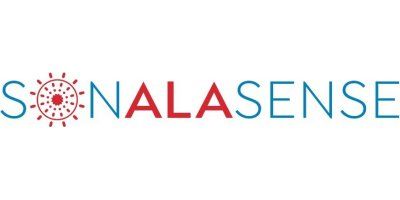

- Home
- Companies
- SonALAsense
- Services
- ALA Photodynamic Therapy (ALA PDT) ...
ALA Photodynamic Therapy (ALA PDT) Treatment
The activated or energized protoporphyrin molecule can also pass on its energy to oxygen molecules in the cell, creating a very short-lived toxic form of oxygen termed a “reactive oxygen species,” which can oxidize adjacent membrane or protein molecules and cause cell death immediately or turn on a process of programmed cell death, termed apoptosis. When light + ALA is used to treat cancers or pre-cancers, this process is called ALA photodynamic therapy or ALA PDT
Topical ALA PDT is used in US dermatology offices every day for the treatment of skin precancers called actinic keratoses as the ALA PDT system consisting of the Levulan® Kerastick® applicator together with the BLU-U® lamp (blue light PDT illuminator). Dr. Stuart Marcus, SonALAsense’s CEO/CMO, successfully led the team at DUSA Pharmaceuticals through the clinical development and FDA approval of this topical ALA PDT system.
From photodynamic to sonodynamic; Development of a “noninvasive PDT” for GBM
Ultrasound waves together with PDT-specific drugs can activate a PDT-like effect. This is thought to be due to light produced through a process termed sonoluminescence, and so it is logical to call a PDT-like effect produced by focused ultrasound (FUS) a “sonodynamic effect.” With the development of Magnetic Resonance Guided FUS (MRGFUS) machines for intracranial “incisionless surgery” (ref Insightec) the effects of ALA sonodynamic therapy (SDT) were investigated in a rat glioma model (Jeong, E.J. et al., 2012. Ultrasound Med. Biol. 38, 2143–2150). ALA+MRGFUS dramatically slowed tumor growth in this model without causing damage to the surrounding normal brain tissue. Dr. Stuart Marcus, our CEO/CMO worked in collaboration with the founder of the MRGFUS procedure for humans, Professor Kullervo Hynynen of Sunnybrook Health Sciences Center in Toronto, Ontario, Canada, to reproduce the data from the Jeong et al study and to optimize the effects of a single ALA + MRGFUS treatment in the rat glioma model. The result was published in Nature: Scientific Reports in July 2019.
